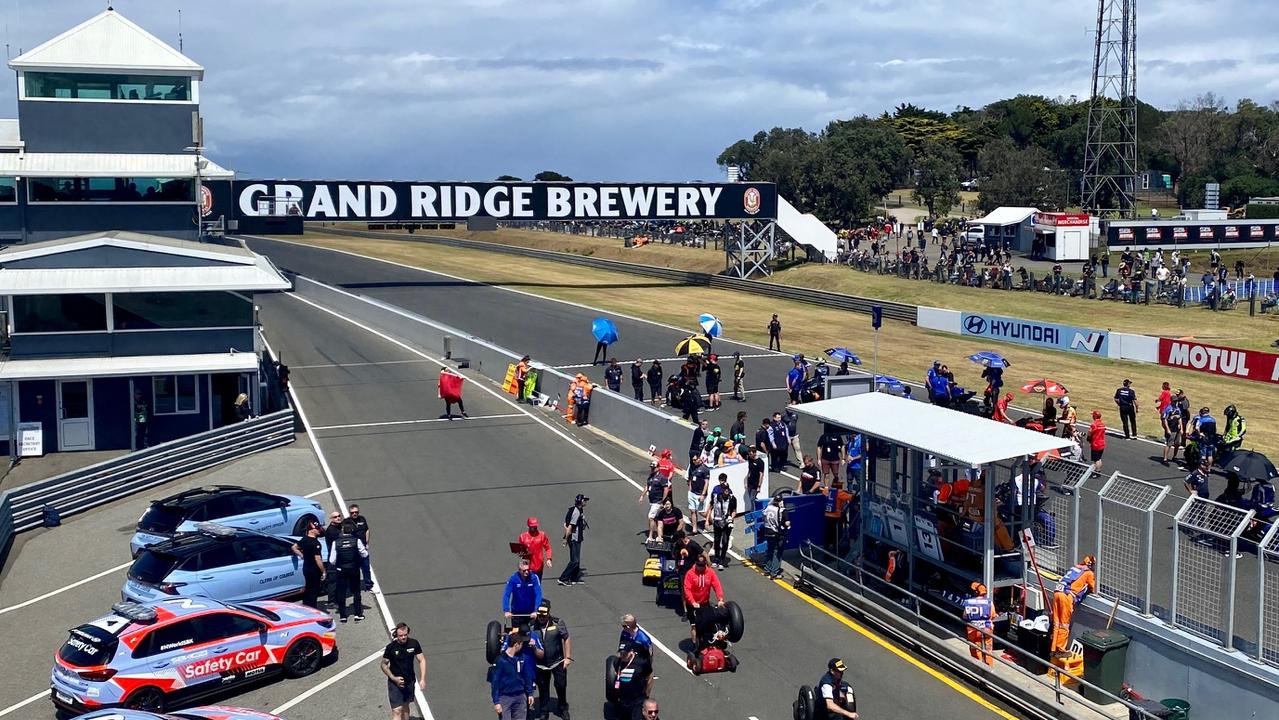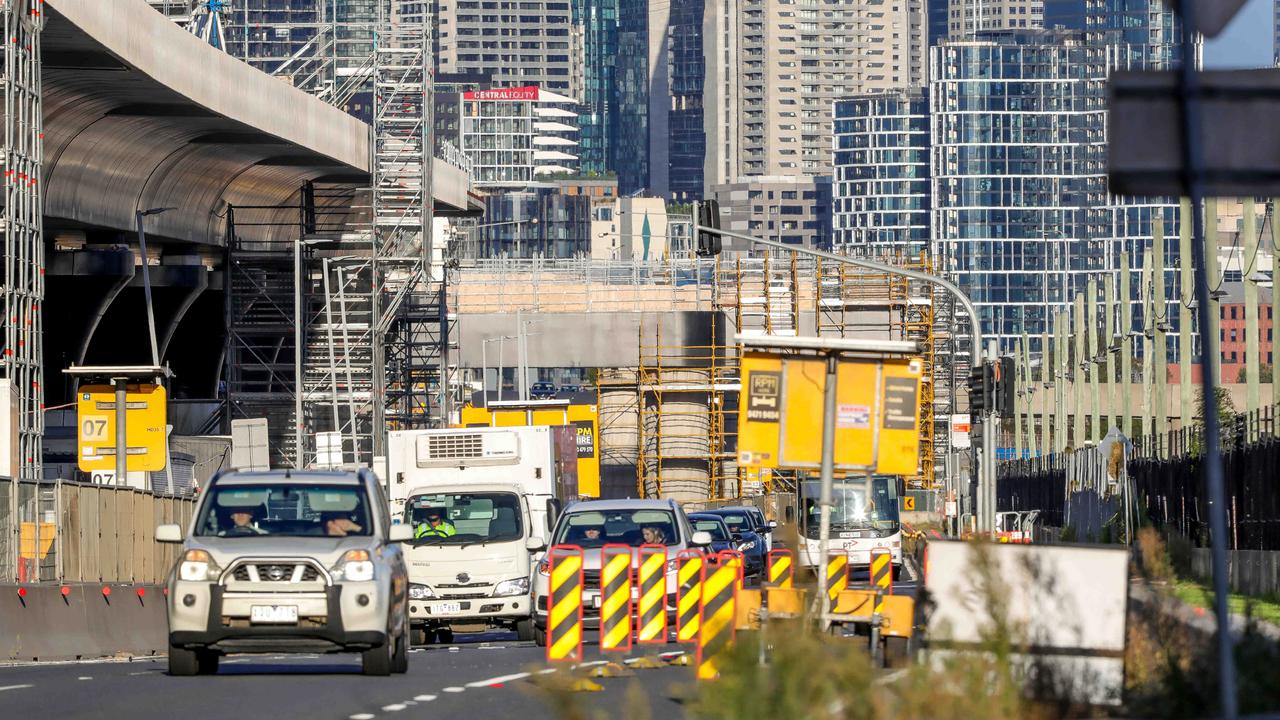New parents win major boost to baby leave
Parents are currently forced to take paid parental leave as one block of 18 weeks. But, in a major shake-up to be announced today, they will be able to stagger some of their leave over two years. Here’s all the details.
News
Don't miss out on the headlines from News . Followed categories will be added to My News.
EXCLUSIVE: New parents will be able to stagger up to six weeks of paid parental leave over two years.
In a major shake-up to be announced today by Minister for Women Kelly O’Dwyer, new mums and dads will be given flexibility over how they receive a significant part of the government-funded pay.
Until now, primary carers — mostly women — have been forced to take the pay as one block of 18 weeks. But under the overhaul, a new mum or dad will have to take only 12 weeks as a block in the first year, and then be able to claim the balance however they choose before their child turns two.
MUMS ON MATERNITY LEAVE URGED TO KEEP IN TOUCH WITH WORK
WORKPLACES NEED TO DO MORE TO GIVE DADS TIME WITH KIDS
TOP WORKPLACES WITH NEW DAD-FRIENDLY POLICIES REVEALED
Ms O’Dwyer says the “game-changing” reform will take effect in 2020. “We want to deliver choice to women and their families and we know fathers also want to take time with their children so there needs to be more flexibility in the system,” she said.
The benefit is paid at minimum wage, totalling $719.35 per week before tax, and is eligible to working mothers or fathers who are the primary carer and earn less than $150,000 individually.
Almost 160,000 parents started receiving Parental Leave Pay in 2017-18, according to the Department of Social Services.
Under the change, a new mum or dad could take the six weeks’ paid leave as one day a week of leave for 30 weeks. This would mean whoever was the primary carer could work a four-day week and still be paid for the fifth day at home via the government entitlement.
They could alternatively take six periods of one week at a time over the course of a year, or any other configuration that suited their individual circumstances.
New mum Gemma Toogood, of Newport, welcomed the change: “You can prepare as much as you can, but having that flexibility gives you a crucial safety net. There is a lot of uncertainty in child birth; unexpected costs or medical issues so we should be able to have options.”

The reform will be the centrepiece of Ms O’Dwyer’s $109 million Women’s Economic Security Statement at the National Press Club in Canberra today.
The new policy is part of a strategy to focus on cost-of-living pressures for parents, ahead of a federal election in the first half of next year.
“This is a real game-changer for parents and particularly for small businesses,” Ms O’Dwyer said.
The minister said it was through her experience as a working mum to Olivia, 3, and Edward, 18 months — and by talking to “countless families across Australia” — that she realised flexibility was the key to getting more women and parents to stay in the workforce.
“Thousands of Australian parents will be better off under our changes,” she said.
“These measures won’t just give women and their families greater choice, they also will help grow the economy.”

All leave arrangements would need to be negotiated between employers and parents directly. And a new parent on an employer-paid parental leave scheme would still be able to access that on top of the government benefit.
But many workplaces around Australia, particularly small businesses, do not offer employer-funded schemes, meaning the government PPL is the only one available to many new parents.
The new policy would need to be introduced to parliament as legislation and would begin on July 1, 2020, meaning the Coalition needs to be re-elected and pass it through both houses for it to become reality.
Ms O’Dwyer said while many men took parental leave, and more needed to be done to facilitate that, it was still mostly women who took time off and suffered poorer economic security as a result.
Women are likely to earn less than men; they are likely to work part-time at more than twice the rate of men; and at retirement age, there is a 42 per cent gap in their superannuation balance.
The policy was on Monday night welcomed by parental support groups. The co-founder of Circle In, Kate Pollard, said: “It is great that the government is looking at innovative ways to support working parents.”
PAID PARENTAL LEAVE SHAKE-UP: HOW IT WILL WORK
■ 18-week parental leave now can be split.
■ 12-week block must be taken in first year then remaining six weeks taken in any configuration that suits the family and employer.
■ Commences 1 July 2020
■ Must be used within 2 years of birth or adoption
■ Small employers / small business, will be able to work with parents to work out what works best. Currently if someone takes the whole 18 weeks small businesses can’t work with their employee to potentially split it.
■ Work test modified to extend the break between working days from 8 to 12 weeks and allow women to move their work test period if they have had to stop work early due to a workplace hazard.
WHAT THE PAYMENTS COULD LOOK LIKE
■ 18 weeks of $719.35 per week in one block — $12,948.30
■ One block of $719.35 per week for 12 weeks — $8632.20
■ Six weeks of $719.35 taken at a later date in one block — $4316.10
■ Six weeks of $719.35 taken at one day a week over the course of a year — $143.87 per week for 30 working weeks
THE WOMEN’S ECONOMIC SECURITY PACKAGE ($109 MILLION OVER FOUR YEARS)
MEASURES TO INCREASE WOMEN’S WORKFORCE PARTICIPATION ($54.8 MILLION OVER FOUR YEARS):
■ Reinstating the Time Use Survey, a contemporary evidence base to measure women’s economic security
■ Improvements to Workplace Gender Equality Agency systems to enhance Australia’s gender equality data and reduce the cost of reporting for business
■ Supporting regional employers through the Career Revive initiative to develop action plans for their business to attract and retain women returning to work after a career break
■ Providing scholarships for women in economics and finance through the Women’s Leadership and Development Program

MEASURES TO SUPPORT WOMEN’S ECONOMIC INDEPENDENCE ($35.6M OVER FOUR YEARS):
■ Providing Specialist Domestic Violence Units and Health Justice Partnerships, including for financial support services
■ Extending early release of superannuation for victims of domestic and family violence
■ Expanding the No Interest Loan Scheme run by Good Shepherd Microfinance to women experiencing family and domestic violence
■ Funding legal assistance to ensure victims of family violence are protected from direct cross-examination by their perpetrators in family law matters
■ Improving the visibility of superannuation assets in family law proceedings
■ Providing family law property mediation
■ Establishing a new Small Claims Property pilots program
MEASURES TO IMPROVE WOMEN’S EARNING POTENTIAL ($18.6M OVER
FOUR YEARS):
■ An expansion of the Curious Minds program
■ Establishing a Future Female Entrepreneurs program in partnership with the private sector
■ Creating a new grants program, Boosting Female Founders, to ensure women can access the finance they need to achieve their entrepreneurial goals


